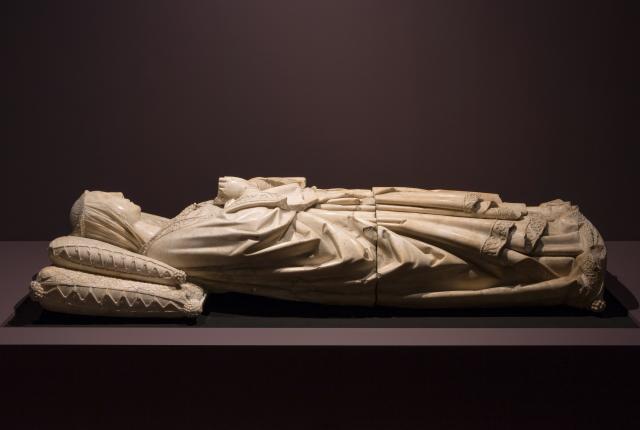Above: A marble tomb in Gil de Siloe style. Photographs Courtesy of Albuquerque Museum.
The ethnically rich roots of Spanish heritage reach around the globe in Visions of the Hispanic World: Treasures from the Hispanic Society Museum & Library, November 10 through March 31, 2019, at the Albuquerque Museum. The show’s 200-plus works, on loan from the New York–based Hispanic Society Museum & Library, most recently wowed crowds at Madrid’s Prado Museum, where critics expressed awe that an American museum was better able to tell Spain’s story than one of their own. “No museum anywhere has such a sweeping and all-encompassing collection of Spanish art from prehistory to the early 20th century,” says Albuquerque Museum Director Andrew Connors. “We’re so lucky that we can bring this story to New Mexico.”
Read more: After Her Husband Was Diagnosed With Cancer, This Artist Decided She'd Help Find A Cure.
Visions of the Hispanic World includes paintings, sculptures, maps, and documents. Among the New Mexico–centric standouts, Connors says, are the 1498 funerary monument of the Duchess of Alburquerque—ancestor of the duke for whom Albuquerque was named—and a 1728 manuscript map “that’s probably the first map to include the city’s name.” In all, the exhibit explores the Celtic, Roman, Jewish, Muslim, and “New World” cultures that influenced Spain, including Mexican documents demonstrating relations between the Nahuatl nobility and the Spanish military, a 1450–1496 illuminated Hebrew Bible, and a 14th-century silk with Islamic calligraphy woven through it. “It looks like abstract patterning,” Connors says, “but it wishes the owner and viewer ‘eternal glory, fortune, prosperity, joy, and happiness.’
 Above: The different styles of Hispanic Art throughout the centuries, from prehistoric to the 20th century, including work from: Antonio Moro, Diego Velázquez, José Agustín Arrieta, and Joaquín de Sorolla y Bastida.
Above: The different styles of Hispanic Art throughout the centuries, from prehistoric to the 20th century, including work from: Antonio Moro, Diego Velázquez, José Agustín Arrieta, and Joaquín de Sorolla y Bastida.
“The thing I most love about the exhibition is the way it so naturally celebrates the organic multiculturalism of Spain. All too often, people are only presented the vision from the Catholic rule of Spain, yet that world got much of its cultural, visual, literary, scientific, mathematic, and musical richness from all the cultures that left their marks through earlier generations.”


